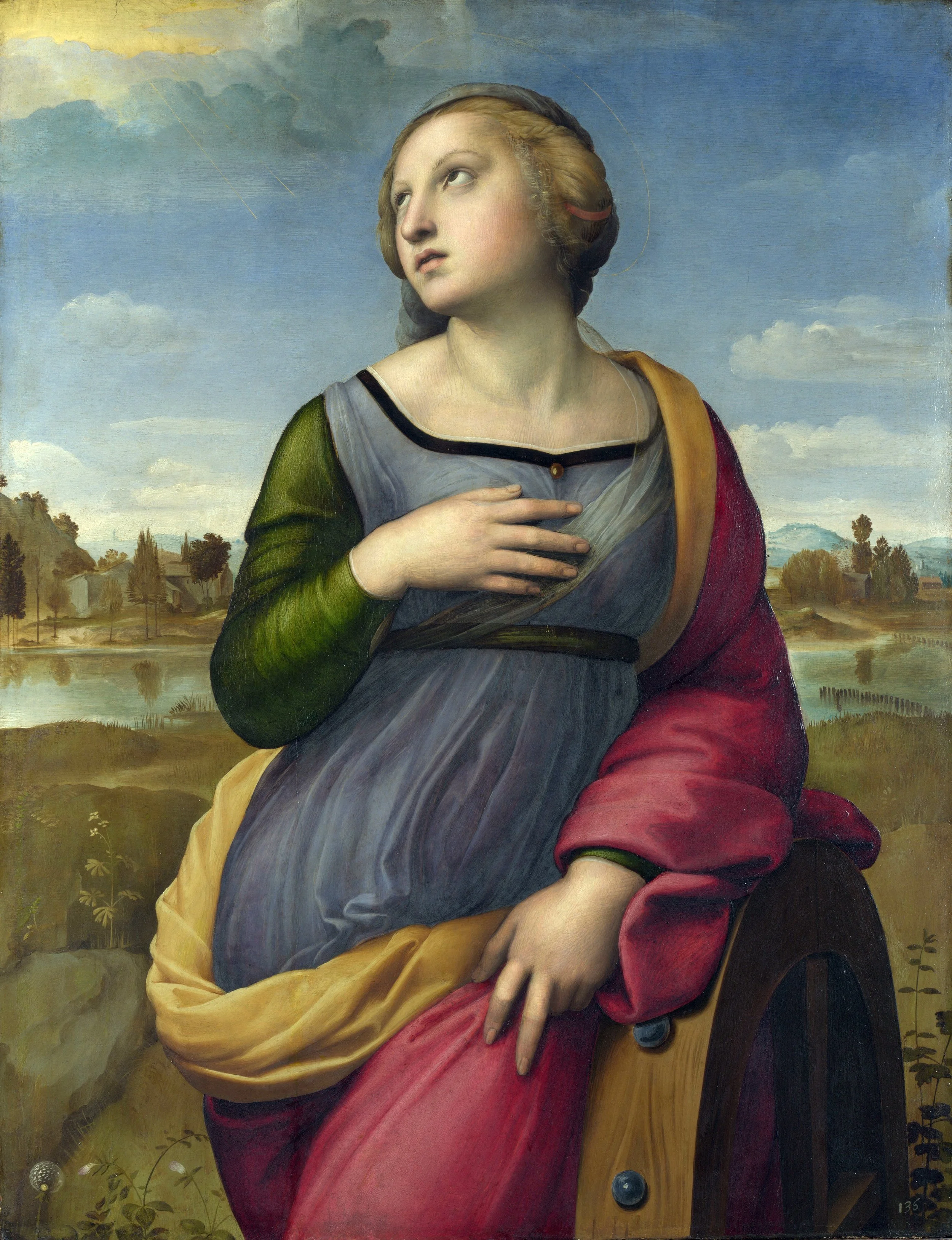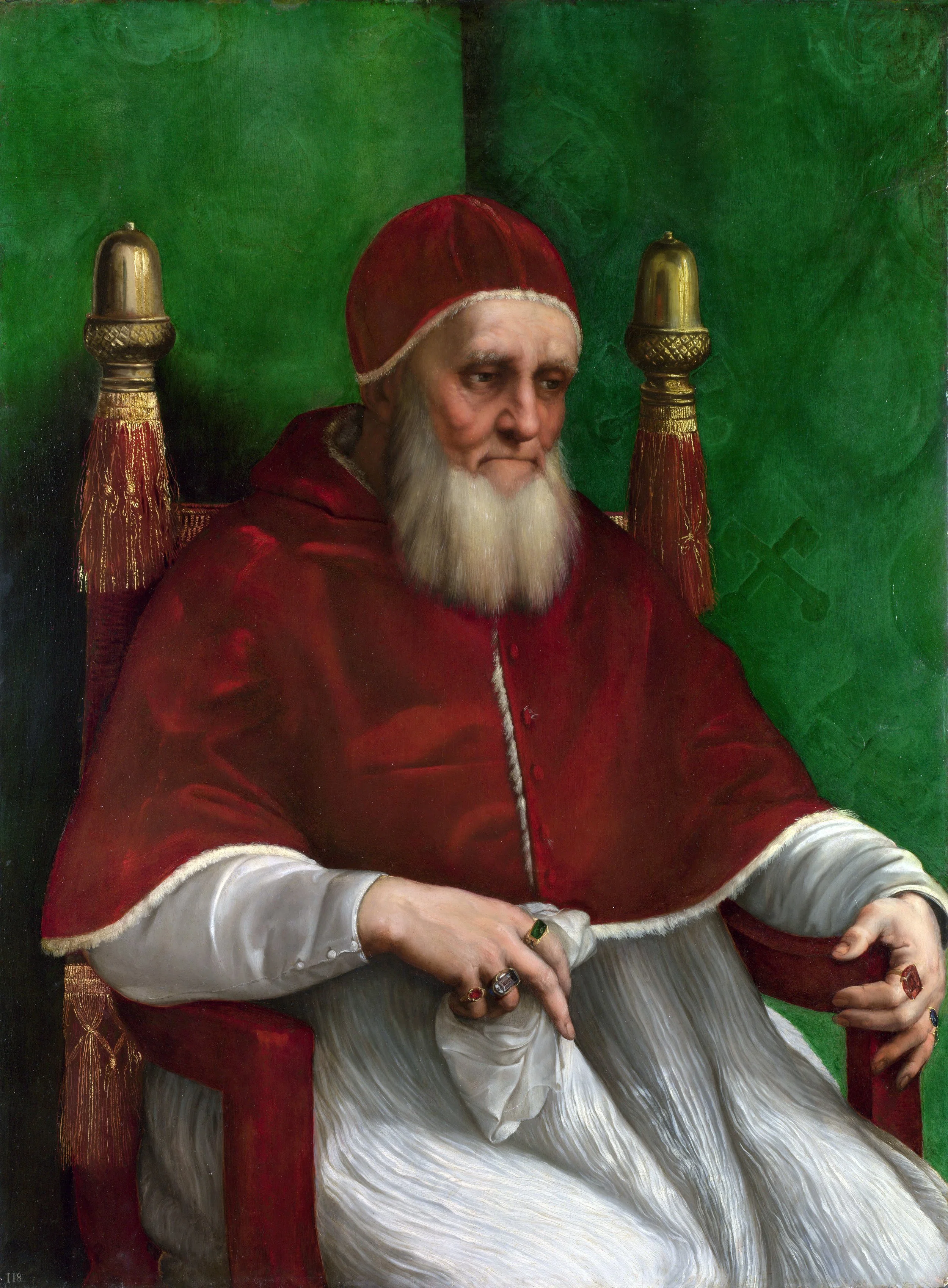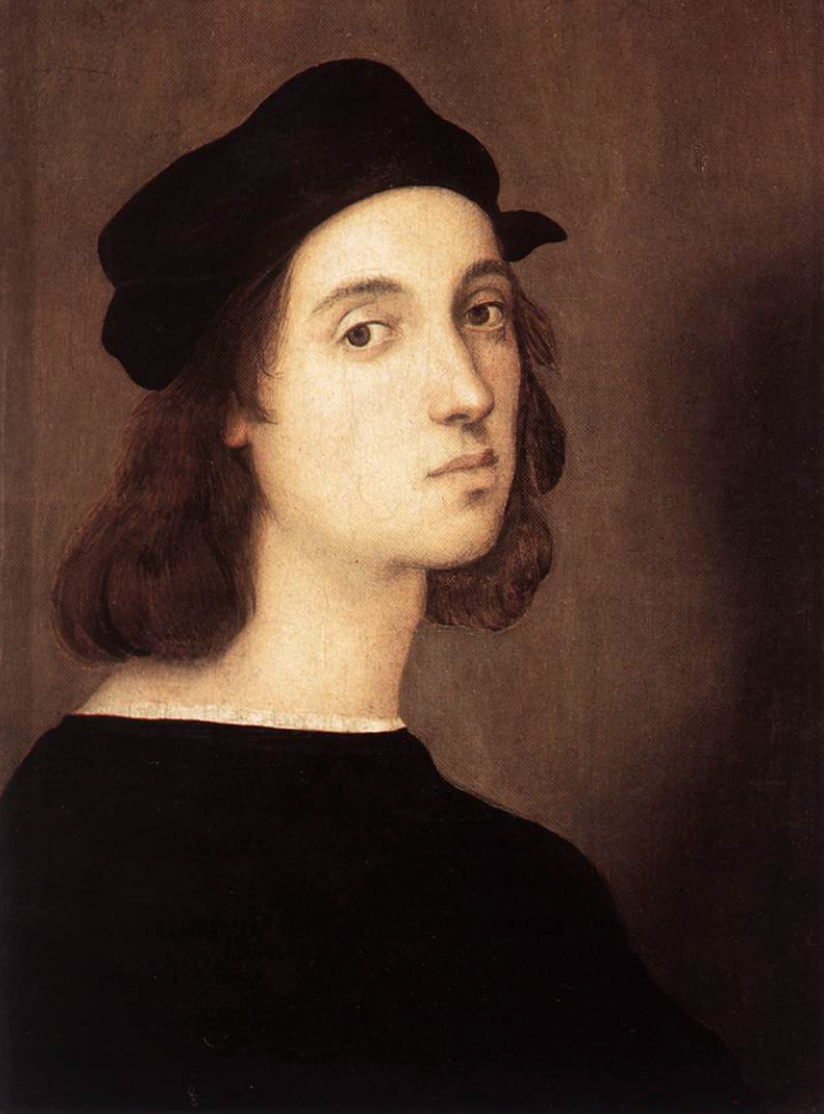Review: Raphael at the National Gallery, London
by George Fountain
Raphael, Detail of St Catherine of Alexandria, c.1507, oil on poplar wood, 72.2 x 55.7 cm, National Gallery, London (Image: Wikipedia)
Raphael, St Sebastian, c.1501-02, oil on panel, 43 x 34 cm, Galleria dell'Accademia Carrara, Bergamo (Image: Wikipedia)
The National Gallery’s long-awaited Raphael exhibition, which opened in April, has garnered overwhelmingly positive reviews for its deep-dive into one of history’s greatest artists – and with good reason.
Born in Urbino, Italy in 1483, Raphael Sanzio was the talented young gun of the ‘big three’ of Renaissance Italy, the others being Leonardo and Michelangelo. Raphael saw huge success and praise throughout his short career, winning acclaim and garnering attention from a young age – working on important local commissions (primarily as court painter in Urbino) while still in his teens. His professional rise was driven by a potent combination of natural talent, imaginative intuition, and commercial control. Ultimately settling in Rome, where his skills as a painter, draughtsmen, architect, and archaeologist were all in high demand, Raphael’s life and career burnt bright. Painting for bankers, dukes, popes, and friends alike, his multifaceted brilliance often put Leonardo and Michelangelo on the back foot. When he died at the relatively young age of 37, Raphael had left an unyielding mark on Renaissance Italy’s artistic landscape, one that now resonates throughout the world. Despite this, Raphael’s praise has not been universal, and he has been the subject of much cynicism throughout the years - the critical reception of his career often takes issue with the over idealisation of his figures, thinking his works ‘too perfect’.
At face value, the National Gallery’s much anticipated foray into Raphael’s life and career takes a seemingly straightforward approach – a monograph of Raphael told through his various works. This seeming absence of a unifying theme is not inspired by a lack of ambition, however, but rather an abundance of it. Calling on loans from the enormous collections in the Louvre, Prado, Uffizi, Vatican and more, the National Gallery has compounded its own abundant catalogue to assemble a group of over one hundred exhibits by the artist – the like of which has never been seen before.
It is this mission to comprehensively work through Raphael’s life and career that makes the exhibition so noteworthy. The room displaying Raphael’s life as the primary call on any papal commission is an exhibition in its own right – but it makes up only one chapter amongst many in this show, each substantial, yet compartmentalised and digestible.
Raphael, Head of a Boy (Self-Portrait?), c. 1498, paper, 30.8 x 18.3 cm, British Museum, London (Image: Wikipedia)
Raphael, The Terranuova Madonna (as displayed in RAPHAEL), c. 1505, oil on poplar wood, 88.5 x 88.5 cm, Gemäldegalerie, Berlin (Image: George Fountain)
The exhibition begins with a striking chalk portrait made by the sixteen-year-old Raphael in the nascent stirrings of his early career. Thought to depict the young artist himself, it is a poignant piece with which to begin the journey. Faint lines converge into partially formed features, lightly etched onto parchment, with soft outlines gradually congregating into clearer characteristics in the centre. The one feature that is fully formed are the eyes – lithely realised and alive with promise and intent. It is a powerful, poetic way to open the show; just as every great work of art likely starts with soft preliminary sketches, so too does every great artist. The first room is a necessary and effective first chapter that lays the groundwork for not only Raphael’s ‘divine’ talent, but his intelligence and versatility. The exhibition subsequently explodes into a cornucopia of artistic practices, media and subject matters, the sudden abundance of works before the viewer mirroring Raphael’s rise.
Each section takes a slightly different approach to compartmentalising Raphael’s career. Some works are gathered by subject matter – the assembling of some of Raphael’s Madonnas strikes a particularly cohesive chord – while others are focused on a particular medium, practice, or patron. At times, it feels less like the presentation of a visual argument, per se, and more a parade of Raphael’s polymathic practices – each room and sub-section simply compound the versatility of the old master. Despite the great wealth of exhibits, the moves with good tempo, no particular part outstaying its welcome and ideas never feeling laboured. The steady speed with which we work through these chapters in the artist’s life encourages the viewer to stay longer, absorbing every drop of each exhibit in front of them in the full knowledge that the next part will be drastically different – but no less remarkable. From his printed engravings to his archaeological exploits and writings, his penchant for Madonnas and altarpieces to his vision as an architect and tapestry designer, each facet of the versatile master is laid out in beautiful detail.
Raphael, Detail of Pope Julius II, c. 1511, oil on poplar wood, 108.7 x 81 cm, National Gallery, London (Image: Wikipedia)
The room focusing on Raphael’s work for ‘The Pope’s Banker’, and later the popes themselves, is particularly important. Raphael’s indelible marks on art history would not be so numerous, nor so pronounced, were it not for his commercial understanding of the art world at the time; he knew how to gain, manage, and complete commissions on a monumental scale. In a huge studio in Rome, with numerous talented garzoni (young male apprentices), the master painter came to monopolise Rome’s artistic scene in his time.
While the flow of Raphael’s career is understandably depicted in a largely chronological fashion, it is almost a shame that a works such as his famed self-portrait (c.1506) appear so quickly and are surround by a cacophony of contemporary pieces. This iconic self-portrait might instead have merited a room of its own at the end of the exhibition, leaving the audience with a deep personal connection to Raphael, and lending a clearer prominence to the artists voice and sense of self - something that the National Gallery’s previous exhibition, Dürer’s Journeys, did very well. That being said, the clarity with which the exhibition tells its story greatly hinges on this unerring discipline with which it walks through Raphael’s lifetime. The sense of development that marks our journey from room to room is its own masterpiece, giving us a true picture of Raphael’s growth, as an artist and as a person.
For all of his commercial nous, his classical interest, and his natural talent, it is fitting that the final room focuses on something far more personal. At the close, we look upon a set of works depicting neither saints nor papal patrons – paintings funded not by money, but instead patronised by love, friendship, and admiration. In this last room, we are greeted by a number of faces, painted and drawn by Raphael at a time where he was often too busy to take on such works in a professional capacity. Instead, they are (primarily) labours of love, ones where Raphael captures both the likenesses and personalities of people with whom he was close.
Raphael, Self-portrait, c.1506, tempera on poplar wood, 47.5 x 33 cm, Uffizi Gallery, Florence (Image: Wikiart)
Raphael, La Fornarina, c.1519-20, oil on wood, 85 x 60 cm, Galleria Nazionale d'Arte Antica, Rome (Image: Wikipedia)
Though La Fornarina naturally garners much attention in this space, not least because of its sensuous subject (and its connection to the admittedly humorous anecdote surrounding Raphael’s death from sexual exhaustion), another piece ties up the room, and the exhibition, in a more fitting fashion. Giulio Romano was a friend, student and, in many ways, successor to Raphael, so it is fitting that he is thought to be immortalised next to the great man himself through the medium of a remarkable double portrait.
The seated youth of Giulio is flanked by his mentor, and while the former looks to his master for guidance, the latter locks eyes with the viewer. With one hand on his protégés shoulder, Raphael’s other arm seems to blend into Giulio’s, his hand becoming that of his student, guiding his movements and creations. It masterfully visualises their relationship, but also perfectly encapsulates the broader message of the countless contributions Raphael passed on as an artist, pointing to the audience as though to say, ‘your turn’. To any fan of the old master, or indeed any sceptic, this exhibition is an enriching display of his life, his career, and the perennial impact he made on the world.
George Fountain is an art historian and writer based in London. With a background in Ancient Greek sculpture, he holds an MA from the Courtauld Institute of Art where he specialised in sixteenth-century Venetian art.
Raphael, Self-Portrait with a Friend, 1518-1520,oil on canvas, 99 x 83 cm, Louvre, Paris (Image: Wikipedia)
6 June 2022







